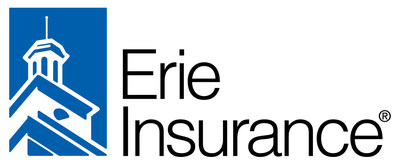Is your deck a danger? Five key areas to check.
ERIE, Pa., June 15, 2018 /PRNewswire/ -- Summer has arrived. For some, this means heading to the beach and spending more time outdoors. That could be as simple as sitting on your deck enjoying the view. But is your deck up for the task?

Erie Insurance lists five things to look out for, especially if your deck is older or not built by professionals.
- Splintering Boards – If your deck is made of wood, maintain its condition every year. Changes in weather can significantly impact durability. One common problem occurs when boards are weathered and begin to split and stick up, causing potential cuts or tripping hazards. It's important to use proper footwear and replace boards that could be splintering.
- Hand Rails – Hand rails can become less and less secure as the nails and screws originally installed work themselves out. Changing weather and varying temperatures are to blame, as warmer weather expands the wood, leaving more room for the nails and screws to move. Be sure to test the stability of the hand rails. They should not wobble or bend, and if they do, it might be time to replace them.
- Stairs – Much like hand rails, stairs can lose strength and durability as they become weathered or used extensively. If not properly secured, stairs can become serious tripping hazards, especially for younger children. If the stairs bend when you walk up/down them or there are any splits in the wood, it is definitely worth addressing.
- Support Posts – Often times, the largest safety concern for your deck depends on the stability of the supports that hold it up. Many people are not aware that, aside from weather, insects can be a big threat to deck structure. Termites and carpenter ants are examples of insects that can do the most damage to wooden structures. If you feel like you may have an infestation near your deck, it may be worth calling a pest control professional. If wood is splitting or decaying, inspect it with a flathead screwdriver by inserting it into the cracks/splits. If you can place it ¼ inch or more into the wood or if the wood has a spongy consistency, this could be a sign of rotting.
- Nails/Screws – Nails, screws and fasteners play a significant role in the safety and stability of the deck. Many decks that were built before the 1980s were supported using nails alone, which is problematic because they do not have the "teeth" that modern day fasteners and screws do. This means that over the years, it is easier for nails to loosen, causing boards and support structures to become unstable. If you think your deck may fall under this category, contact a local contractor to be sure this will not become an issue.
It is always important to use your best judgement and if something does not look right, address it as soon as possible. If you are unsure, talk to a professional. And contact an Erie Insurance agent to make sure you have the homeowners coverage you and your family need.
About Erie Insurance
According to A.M. Best Company, Erie Insurance Group, based in Erie, Pennsylvania, is the 10th largest homeowners insurer and 11th largest automobile insurer in the United States based on direct premiums written and the 16th largest property/casualty insurer in the United States based on total lines net premium written. The Group, rated A+ (Superior) by A.M. Best Company, has more than 5 million policies in force and operates in 12 states and the District of Columbia. Erie Insurance Group is a FORTUNE 500 company.
News releases and more information about Erie Insurance Group are available at www.erieinsurance.com.

![]() View original content with multimedia:http://www.prnewswire.com/news-releases/is-your-deck-a-danger-five-key-areas-to-check-300666990.html
View original content with multimedia:http://www.prnewswire.com/news-releases/is-your-deck-a-danger-five-key-areas-to-check-300666990.html
SOURCE Erie Insurance
